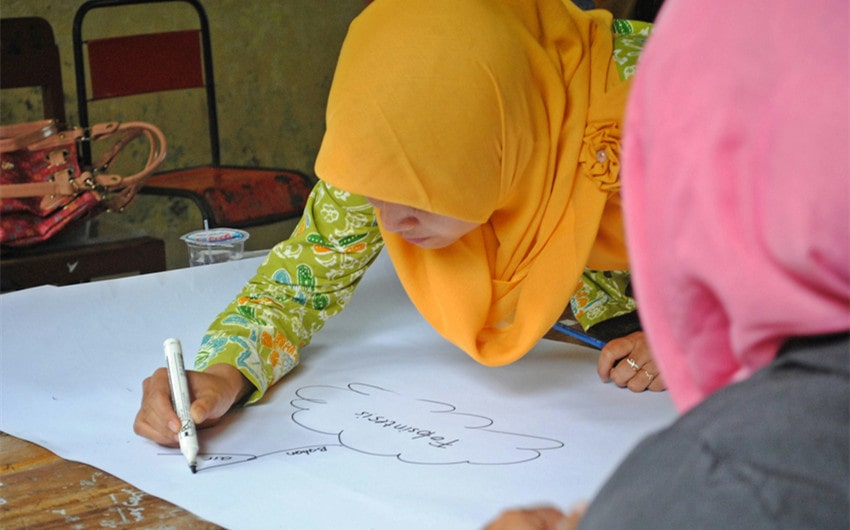Mind Mapping for Team Collaboration: Unlocking Creativity and Efficiency
Effective mind-mapping tools do more than capture ideas — they enhance collaboration, streamline workflow, and create clear communication channels for employees. As team members contribute to the growing map, they develop a unified vision of their goals and the steps needed to achieve them. A visually collaborative approach to projects strengthens team bonds, sparks creative solutions, and turns abstract concepts into actionable plans that drive meaningful business outcomes.
Why Collaboration Matters in Modern Business
Collaborative teams consistently outperform siloed departments in the workplace. Effectively blending diverse skills, viewpoints, and expertise creates a culture where employees feel valued and are encouraged to share their insights. Collaboration helps businesses become more agile in the face of modern, complex threats, too.
Clear communication also builds trust and keeps projects moving forward smoothly. Teams that communicate effectively catch potential issues early, as employees feel confident sharing ideas, asking questions, and offering constructive feedback that improves the final outcome.
Common Collaboration Challenges
Disconnected teams often struggle with duplicated work, missed opportunities, and competing priorities that slow progress. When information stays trapped in departmental silos or gets lost in endless email chains, teams waste time searching for answers they already have. These barriers lead to misaligned efforts, missed deadlines, and frustration among team members who can’t access the information they need to do their best work.
How Mind Mapping Facilitates Team Collaboration
Visual mapping techniques help teams connect and build ideas naturally. Visualization clarifies complex topics while highlighting meaningful links between concepts. Mind maps help reveal patterns and gaps in thinking, creating space for every team member to contribute fresh perspectives and insights to group discussions.
Mind maps also simplify the process of sharing complex ideas. When working with a map, employees can draw connections between ideas and can contribute insights at their own pace. Mind maps organize team knowledge and improve clarity across the business. The visual format keeps teams aligned on priorities, roles, and deadlines at every project stage.
Meanwhile, the mapped structure sparks productive conversations about project scope as teams spot connections between different work streams.
Using Mind Mapping Software to Enhance Collaboration
Mind mapping software creates a unified space where teams visualize and build ideas together. As team members add branches and connections to the shared map, patterns and insights emerge that might stay hidden in traditional meetings. The visual format transforms abstract concepts into clear, actionable plans while encouraging participation from all team members, including those who might hesitate to speak up in regular discussions.
Team members can contribute in real-time, with updates appearing instantly across everyone’s screens. The shared workspace lets people naturally expand concepts and refine each other’s ideas without disrupting the creative flow. A more dynamic environment often brings out insights from quieter participants who find it easier to engage through visual contributions.
The software fits smoothly into existing project workflows, too, helping teams outline objectives and spot potential gaps. As the map grows, relationships between different project elements become clear – from task dependencies to resource needs. This shared visual understanding helps teams track individual responsibilities while seeing how each piece supports the overall goals, often leading to creative solutions through unexpected connections.
Practical Applications of Mind Mapping in Team Settings
Project managers should take the lead by laying out a central goal and branching out into tasks, deadlines, and ownership details. For example, a software development team might place “Launch Mobile App” at the center, with branches extending to cover UI design tasks, backend development, testing phases, and marketing needs.
During troubleshooting sessions, mind maps help teams visually dissect complex problems. Faced with a production issue, engineers can outline affected systems, potential causes, and proposed solutions — all in one glance. Team members contribute insights directly to the map, collaboratively building a comprehensive overview of the issue.
Mind maps also serve as clear records of meeting outcomes. Instead of sifting through lengthy notes, teams can quickly reference a structured visual layout of decisions and action items. A product team discussing new features might map out user needs, technical requirements, and resource constraints, with connecting lines highlighting relationships between these elements.
Best Practices for Collaborative Mind Mapping
Every mind mapping session should have a defined purpose, whether it’s generating ideas, solving a specific problem, or mapping out a project timeline. Clearly defined goals keep teams on-task when mind mapping and ensure that all employees are aligning their efforts effectively. Assigning a facilitator further enhances productivity by guiding the conversation, managing time effectively, and ensuring every voice is heard.
Use elements like colors, icons, and categories to help differentiate tasks, emphasize priorities, and highlight relationships between ideas. These visual cues make complex maps easier to follow and ensure key insights stand out at a glance. Mind mapping sessions become more engaging, organized, and impactful when teams combine clear objectives, strong facilitation, and thoughtful visual design.
Final Thoughts
Mind mapping works best when teams align their goals and use features like colors and icons to improve clarity. Using visual cues helps team members understand their roles and ensures business analysts can quickly gather and interpret important information. This effective style of mind mapping can foster a more collaborative approach to working and help businesses face complex challenges.







